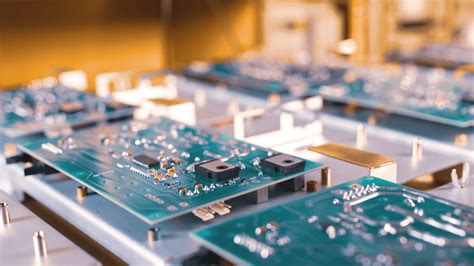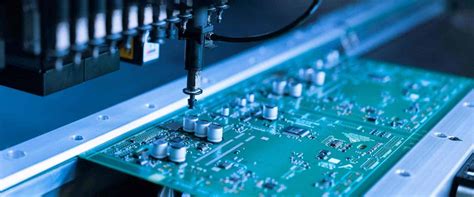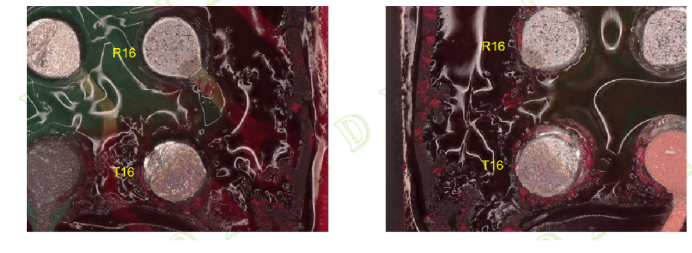Unleashing Innovation: The Art and Science of Assembled Circuit Boards
Key Takeaways
Understanding pcb assembly is crucial for anyone involved in the electronics industry, as it encompasses the fundamental processes that transform a creative idea into a functional reality. Assembled circuit boards play a pivotal role in delivering the performance and reliability that modern devices demand. This intricate process involves several key elements, starting with the design of the printed circuit board (PCB) itself, which must balance electrical efficiency with spatial constraints. Choosing the right materials is equally significant; advancements in cutting-edge materials not only enhance durability but also support high-frequency applications, making them essential for today’s technology.
In addition to these principles, familiarity with the tools of the trade is vital for effective pcba. From precision soldering tools to automated assembly machines, each piece of equipment has its role in ensuring high-quality assembly results. Engaging with real-world applications through various case studies illuminates how innovative designs translate into practical solutions across industries—from consumer electronics to medical devices.
Ultimately, understanding how circuit boards enhance functionality and drive modern technology cannot be overstated. They not only provide essential connections between components but also improve efficiency and enable the complex features we often take for granted in our everyday lives. As we look ahead to future trends in circuit board technology, it’s clear that creativity and engineering are continually intertwined, pushing boundaries and inspiring new innovations in this remarkable field.
The Basics of Circuit Board Design: Principles and Practices
Understanding the foundational principles of circuit board design is essential for anyone interested in the intricate world of pcb assembly. At the heart of every assembled circuit board (pcba) lies the need to create a reliable and efficient pathway for electrical signals. Designers start with a schematic diagram that represents the electrical connections and components, serving as a blueprint for layout.
When laying out a circuit board, several critical factors must be considered, including trace width, which can affect current capacity; component placement, which impacts signal integrity; and grounding techniques to minimize noise. Effective pcb assembly demands precision both in design and actual manufacturing processes, as even minor misalignments can lead to significant performance issues.
| Design Aspect | Description |
|---|---|
| Trace Width | Determines current capacity and heat dissipation |
| Component Placement | Impacts signal integrity and thermal management |
| Grounding Techniques | Essential for reducing electromagnetic interference |
“The secret to an effective pcba lies in meticulous planning—every trace, every component matters.”
Utilizing advanced software tools can facilitate these design processes by allowing engineers to visualize potential issues before physical assembly begins. Furthermore, incorporating innovative materials can enhance the overall performance of circuit boards, paving the way for cutting-edge applications in diverse industries. A comprehensive understanding of these principles is fundamental for designers aiming to excel in circuit board assembly and contribute to the evolution of modern technology.
Cutting-Edge Materials: Innovations in Circuit Board Manufacturing
The realm of pcb assembly is continually evolving, driven by innovations in materials that enhance both performance and sustainability. The integration of advanced materials such as high-frequency laminates, flexible substrates, and environmentally friendly components is revolutionizing the landscape of printed circuit board assembly (PCBA). High-frequency laminates, for instance, allow for better signal integrity and lower loss rates, making them essential for applications in telecommunications and aerospace. Meanwhile, flexible substrates are paving the way for lightweight and compact designs that can be integrated into a variety of electronic devices, from wearables to automotive systems. Moreover, consumer demand for sustainable products has led manufacturers to explore biodegradable materials and recyclable options in pcb assembly, emphasizing a commitment to reducing electronic waste. These innovations not only optimize functionality but also reflect a growing awareness of environmental considerations within the electronics industry. As we witness these cutting-edge advancements in materials, the potential for creating high-quality pcba solutions that meet modern demands becomes increasingly evident, highlighting the synergy between technology and sustainability in the heart of circuit board manufacturing.
Tools of the Trade: Essential Equipment for Circuit Board Assembly
When it comes to successful pcb assembly, having the right equipment is crucial. The process requires an array of specialized tools that facilitate both precision and efficiency. One of the most essential tools is the soldering iron, which is used for joining electronic components to the printed circuit board (PCB) through solder. This tool allows for precise control over heat application, ensuring that connections are made cleanly without damaging sensitive components. Additionally, pick and place machines play a pivotal role in modern pcba processes by automating the placement of components onto the board, significantly speeding up production while maintaining accuracy.
Moreover, an efficient reflow oven is needed to heat the assembled board evenly, allowing for a uniform melting of solder and ensuring reliable connections throughout. Hand tools like tweezers, cutters, and screwdrivers are also indispensable during assembly as they assist in handling delicate components and making necessary adjustments. For inspections, tools such as magnifying glasses or digital microscopes help in identifying defects or misalignments on the board.
The emergence of advanced technologies such as 3D printing has introduced innovative prospects in creating prototypes for circuit boards, enabling rapid iteration and experimentation without lengthy lead times. Furthermore, software solutions for design automation provide engineers with robust means to simulate layouts before physical assembly takes place, minimizing costly errors and enhancing efficiency. All these tools combined contribute not only to a higher quality of assembled circuit boards but also to fostering innovation in the ever-evolving landscape of technology. Through continuous advancements in these essential tools, industries are able to push boundaries and explore new horizons in electronics design and functionality.
Case Studies: Real-World Applications of Assembled Circuit Boards
Assembled circuit boards, or pcba, play a pivotal role in various industries, showcasing their versatility and importance. One notable example is in the consumer electronics sector, where the integration of pcb assembly techniques has led to the development of compact and efficient devices. Smartphones, for instance, rely on meticulously designed circuit boards that not only reduce size but also enhance performance and functionality. In the realm of healthcare, assembled circuit boards are fundamental to sophisticated diagnostic equipment that aids in accurate disease detection. Wearable devices increasingly use pcba to monitor health metrics, providing real-time data that empowers users to make informed decisions about their well-being. Additionally, the automotive industry benefits from advanced circuit board assembly techniques to improve vehicle safety and autopilot features through sophisticated electronic control units (ECUs). In industrial applications, robust circuit boards enable automation and enhance efficiency, allowing for smarter manufacturing processes. These case studies highlight how the art and science of assembled circuit boards seamlessly integrate into our daily lives while driving innovation across multiple sectors.
Enhancing Functionality: How Circuit Boards Drive Modern Technology
In today’s fast-paced technological landscape, pcb assembly plays a pivotal role in enhancing the functionality of countless devices. As the backbone of modern electronics, pcba not only connects various components but also ensures optimal performance and reliability. The intricacies of circuit board design allow for sophisticated pathways that manage current flow and signal transmission, effectively enabling complex operations within devices, from smartphones to industrial machinery. The assembly process integrates cutting-edge techniques and innovative materials, ensuring that each board meets the high standards of efficiency and durability required in contemporary applications. Emphasizing the importance of quality assurance in pcba, manufacturers deploy rigorous testing to identify potential flaws, which ultimately protects the end-user experience. With advancements such as flexible circuits and miniaturization techniques, circuit boards are becoming more versatile, accommodating an ever-expanding range of functionalities while reducing size. The synergy between creativity and engineering in circuit board development not only meets but often exceeds consumer expectations, driving technology forward into a new era of innovation. As we continue to explore this dynamic field, it becomes evident that the progress of assembled circuit boards is a testament to the convergence of art and science in technology.
From Concept to Creation: The Assembly Process Explained
The journey from concept to creation in pcb assembly is an intricate dance between precision and creativity. Initially, the design phase involves creating detailed schematics that define the electronic pathways on the circuit board. These designs are then translated into physical forms through a meticulous process that includes material selection, where innovations in cutting-edge materials come into play, ensuring robustness and reliability. Once the materials are prepared, the assembly process itself begins with placing components onto the board, a step known as pick-and-place. Advanced machinery aids in this stage, allowing for high-speed and precise placement of components such as resistors, capacitors, and integrated circuits. Following placement, soldering techniques—often using either traditional wave soldering or modern reflow methods—secure these components firmly to the board. The culmination of this process is a completed assembled circuit board (pcba) that undergoes rigorous testing to verify functionality and performance. This phase not only ensures quality assurance but also highlights the sophisticated synergy of art and science inherent in circuit board assembly. The end result is a robust assembled circuit board ready to drive innovation across various industries, marking a significant milestone in modern electronic manufacturing.
Future Trends in Circuit Board Technology: What’s on the Horizon?
As technology continues to advance at a rapid pace, the field of pcb assembly is poised for transformative changes. Future trends in circuit board technology are increasingly influenced by the demand for more compact and energy-efficient designs. One significant shift is towards the integration of miniaturization and flexible electronics. Manufacturers are exploring novel ways to create thinner, lighter, and more adaptable pcba solutions that can easily fit into a range of devices, from wearables to medical equipment. Additionally, the rise of Internet of Things (IoT) devices necessitates circuit boards that support enhanced connectivity and functionality. Emerging materials, such as environmentally friendly substrates and advanced conductive inks, are expected to play a crucial role in this evolution. Furthermore, automation in circuit board assembly processes is set to increase efficiency and precision while reducing labor costs. As designers embrace new technologies like 3D printing for initial prototypes or production-grade boards, the development cycle will become shorter and more flexible. Overall, these future trends signify a remarkable shift toward smarter, more efficient pcb assembly processes that will reshape how we interact with modern technology in our daily lives.
Celebrating Innovation: The Role of Creativity in Circuit Board Assembly
In the realm of pcb assembly, the interplay between creativity and engineering is pivotal. As designers and engineers embark on the journey of creating printed circuit boards (PCBs), they are called upon to blend artistic vision with technical precision. The process begins with brainstorming innovative layouts that not only meet functional specifications but also optimize space and improve efficiency. This creative phase is crucial, as it sets the foundation for how components are arranged, ultimately influencing the functionality and reliability of the final product.
The selection of materials plays a significant role in this endeavor; innovative compounds are continuously being developed to enhance performance and durability in demanding environments. By leveraging these advancements, teams can push the boundaries of what’s achievable while simultaneously prioritizing sustainability. Furthermore, as designers transition from concepts to tangible products, they employ cutting-edge tools that facilitate intricate designs, allowing for greater experimentation in circuit patterns and configurations.
Throughout this exciting journey of pcba, ideation meets implementation, yielding unique solutions that cater to various industry needs—from consumer electronics to complex aerospace applications. Creativity does not merely enhance aesthetics; it drives progress by ensuring that assembled circuit boards can adapt to emerging technologies and evolving consumer demands. Celebrating this synergy between creativity and engineering underscores its importance in shaping a future where technology is not just functional but also inspires innovation at every turn.
Conclusion
As we conclude our exploration of the art and science of assembled circuit boards, it is essential to recognize the profound impact that pcb assembly has on contemporary technology. Each pcba serves not merely as a framework for electronic components but as a testament to innovation, enhancing functionality and efficiency in myriad applications. From smartphones to medical devices, the design and assembly process encapsulates a blend of precision engineering and creative prowess. The evolution of materials used in circuit board manufacturing reflects a commitment to sustainability and performance, paving the way for the future of electronic design. Moreover, as we gaze into what lies ahead, emerging trends indicate a growing integration of intelligence within these components, further igniting innovation across industries. Embracing these advancements enables manufacturers to push boundaries and continue delivering high-quality assembled circuit boards that not only meet but exceed the expectations of users in an increasingly technology-driven world.
FAQs
When exploring the nuances of pcb assembly or PCBA, many questions arise regarding the intricacies of the process and its applications. One common question is about the importance of design accuracy in the assembly process. Ensuring that every component is placed correctly on the assembled circuit board is critical, as even minor discrepancies can lead to performance issues. It’s also essential to understand the materials used in pcba; innovations such as flexible substrates and high-frequency laminates greatly enhance the performance and reliability of circuit boards.
Another frequently asked question pertains to the tools utilized during assembly. From precision pick-and-place machines to advanced soldering techniques, each tool plays a pivotal role in achieving high-quality results in pcb assembly. Manufacturers continuously seek out cutting-edge equipment to increase efficiency and maintain high standards.
Readers may also wonder about the variations in assembly processes for different applications. Industries ranging from consumer electronics to aerospace have unique requirements that must be catered to during production. As such, flexibility in design and assembly techniques becomes imperative for meeting these diverse demands.
For those keen on diving deeper into this fascinating subject, we encourage you to explore new insights and resources available on various platforms. To learn more about pcb assembly, you may find this link particularly useful:







